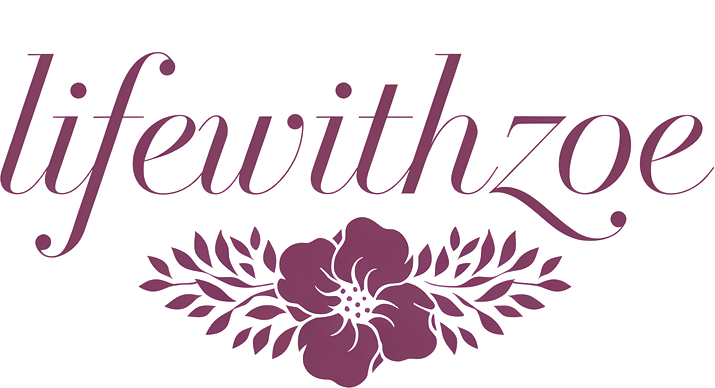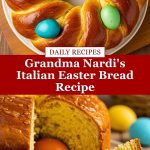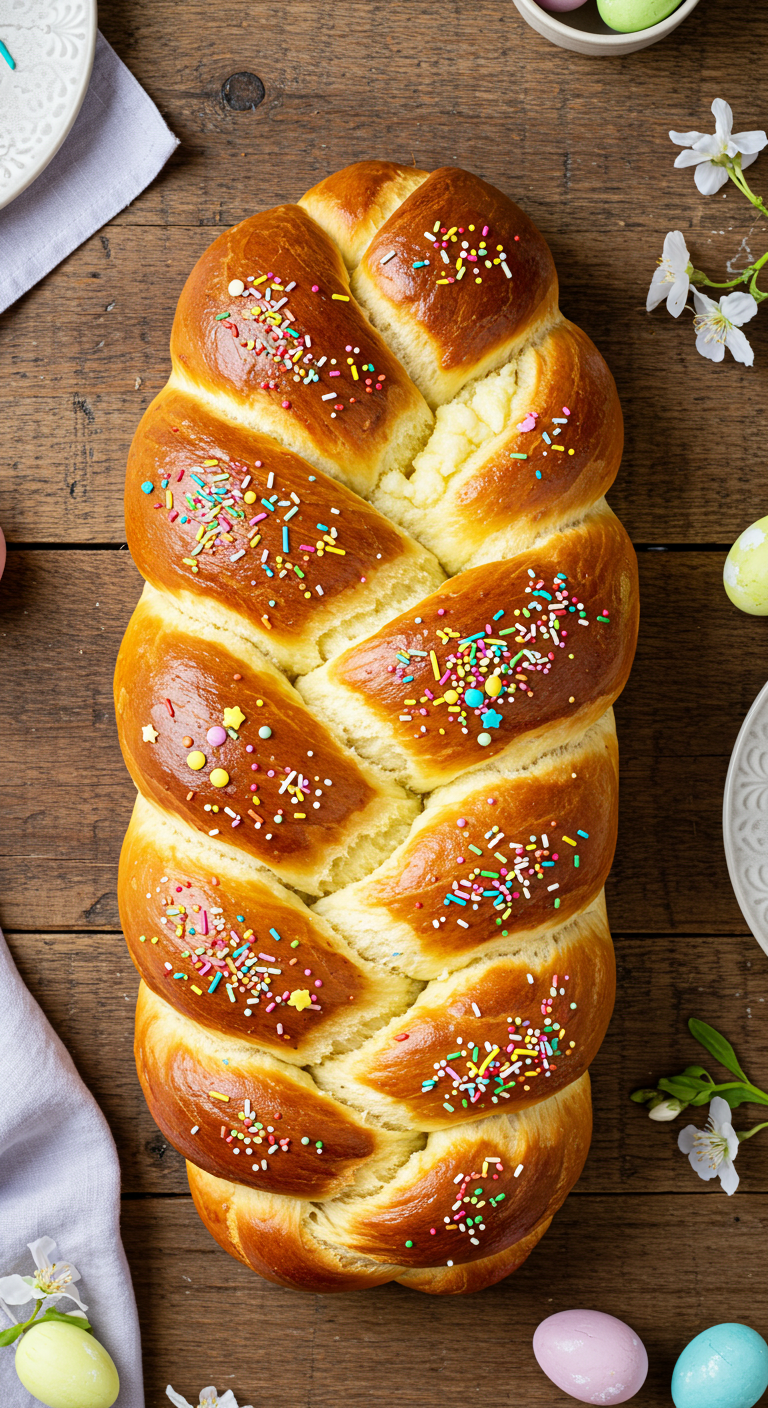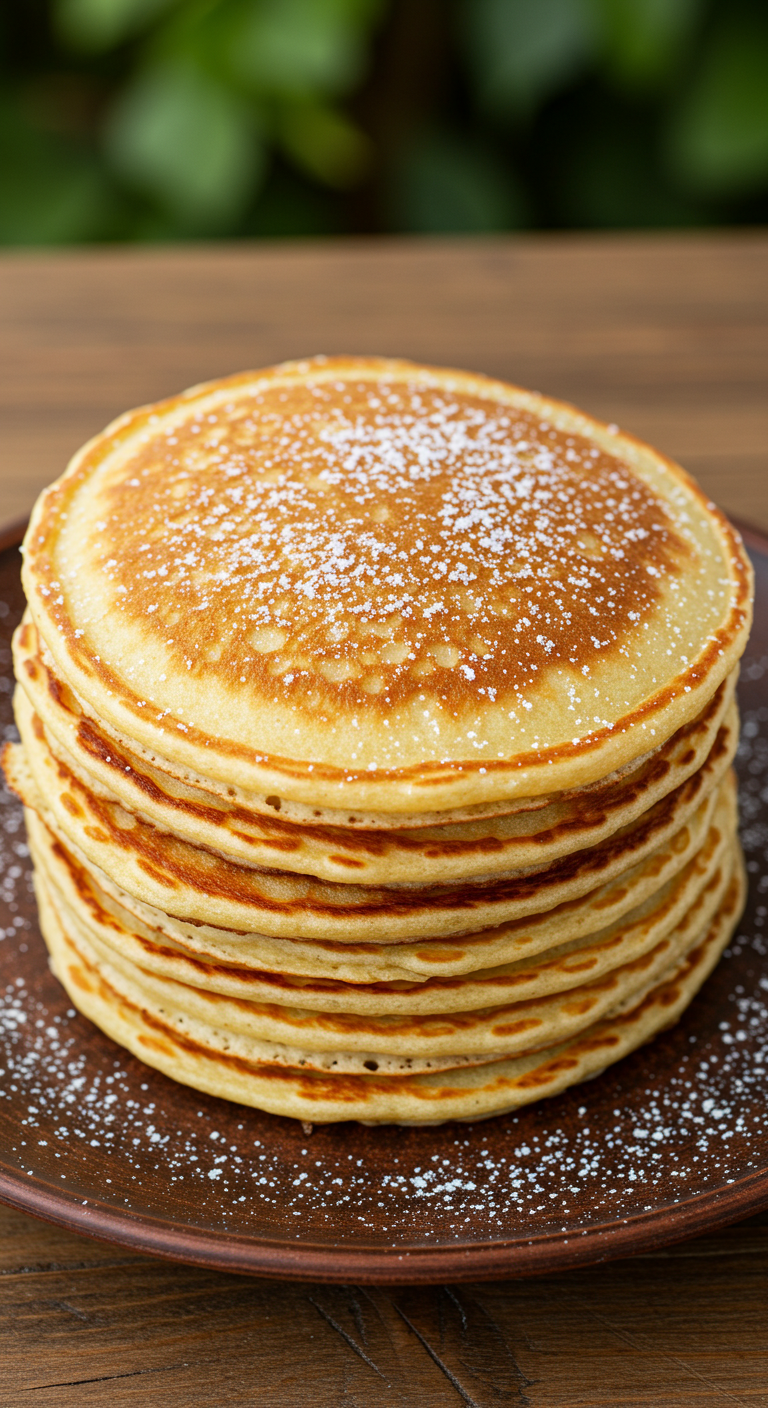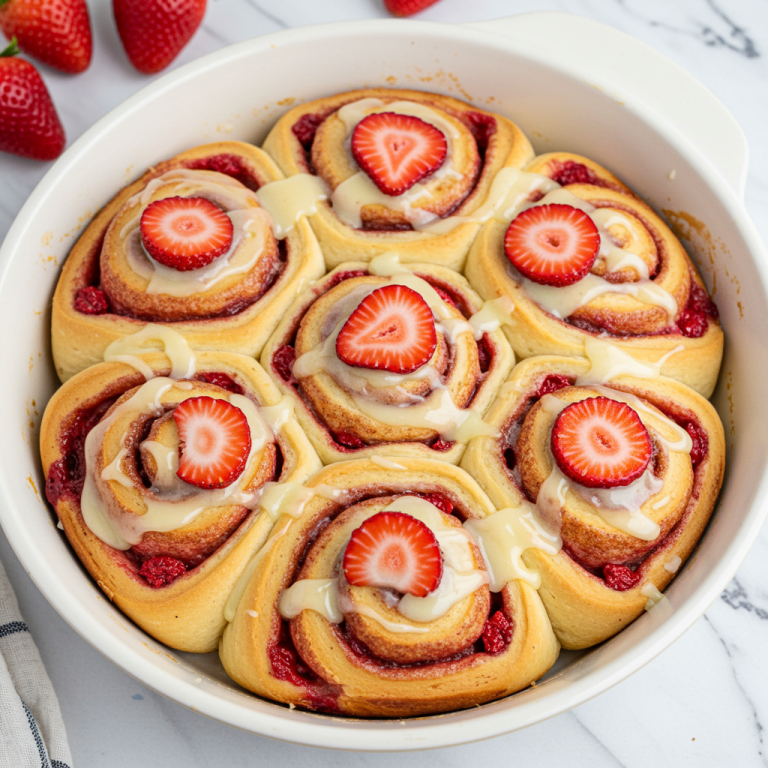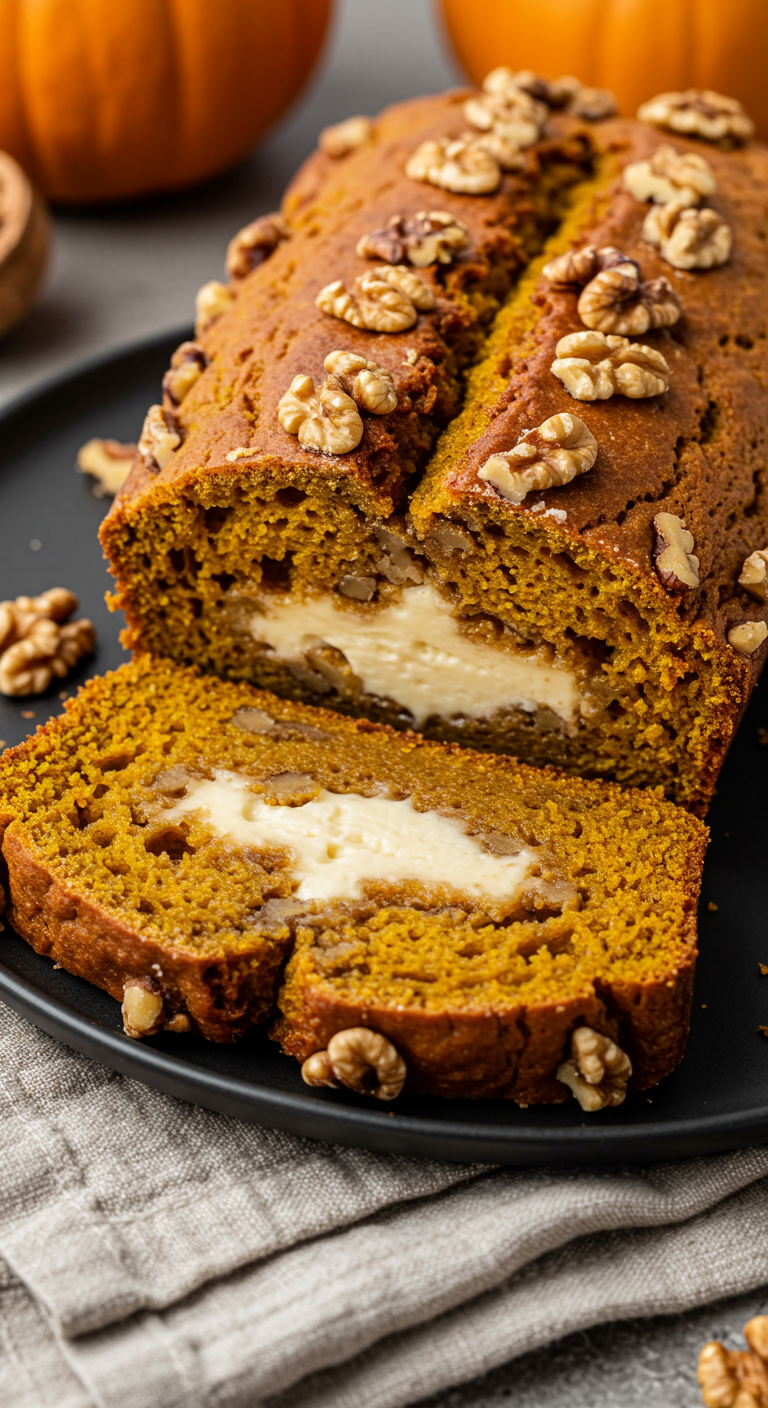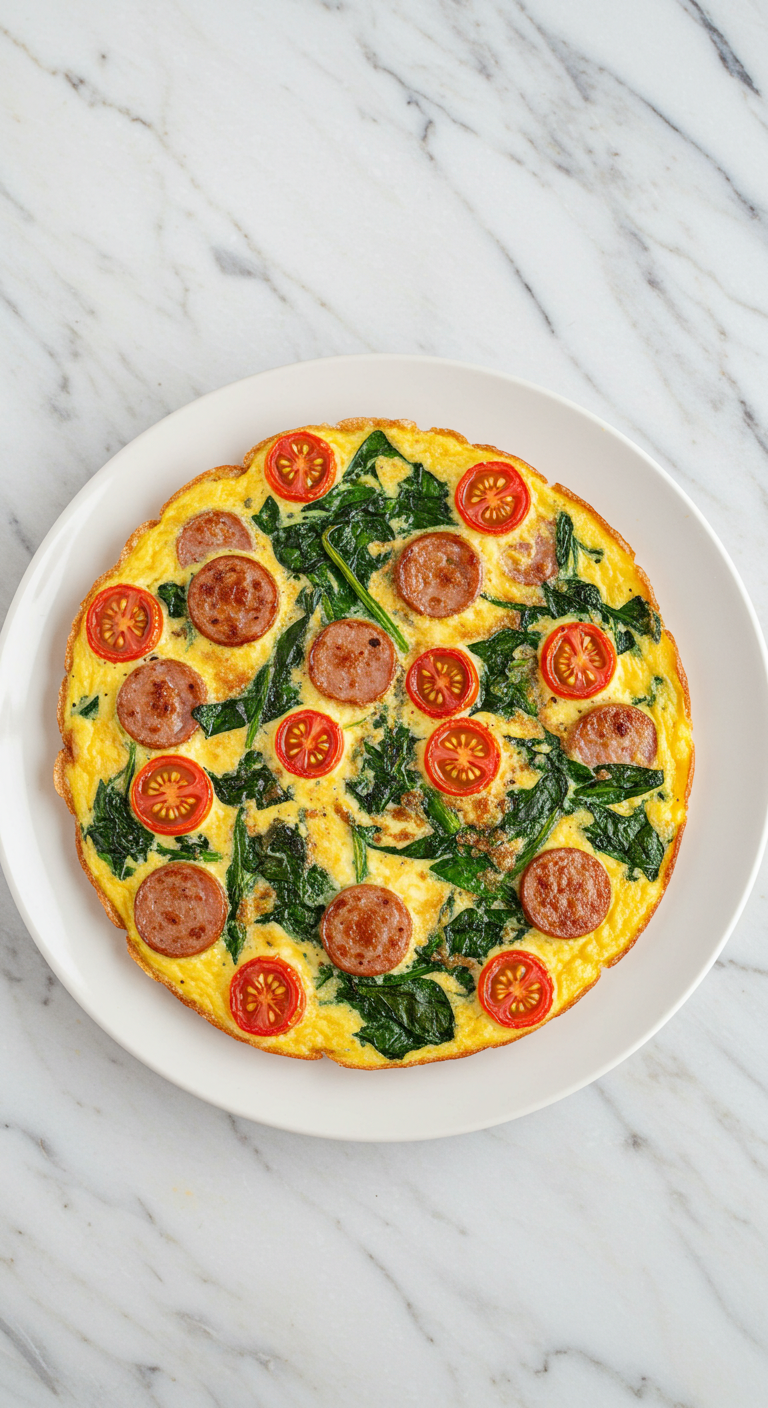Grandma Nardi’s Italian Easter Bread
Every Easter, my kitchen transforms into a warm, yeasty haven filled with memories and tradition. Grandma Nardi’s Italian Easter Bread has always been the heart of our celebration. The vibrant eggs nestled in golden braided dough make it the centerpiece of our Easter table, and the sweet, slightly citrusy aroma brings me straight back to her old wooden table dusted with flour.
Making this bread is more than just baking; it’s a ritual. From mixing the rich dough to carefully braiding the strands and tucking in the dyed eggs, it’s a process that brings our family together every year. I remember kneading the dough by hand with her, the scent of orange zest and vanilla filling the air, and that feeling of pride when it came out of the oven, shiny and perfect.
This recipe isn’t just about the ingredients; it’s a piece of our story. Now I make it with my children, and I hope they pass it down one day too. If you’ve never tried baking bread before, don’t worry. I’ll walk you through every step, and before you know it, you’ll be baking a showstopper like this with confidence.
Before we begin, if you’re a fan of nostalgic, heartwarming baked goods, you should check out my Nutella French Toast Casserole and the sweetly spiced Cinnamon Donut Bread Recipe too.
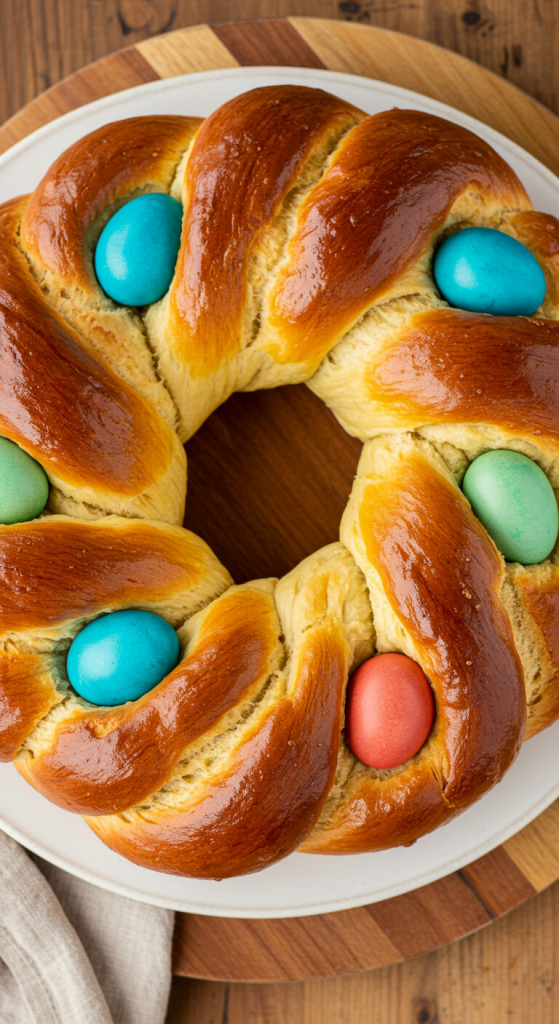
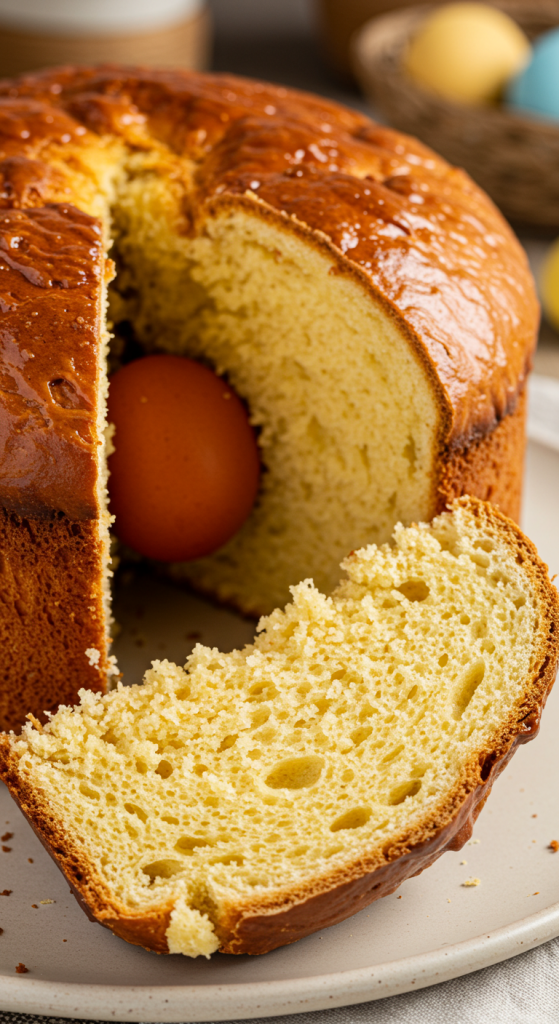
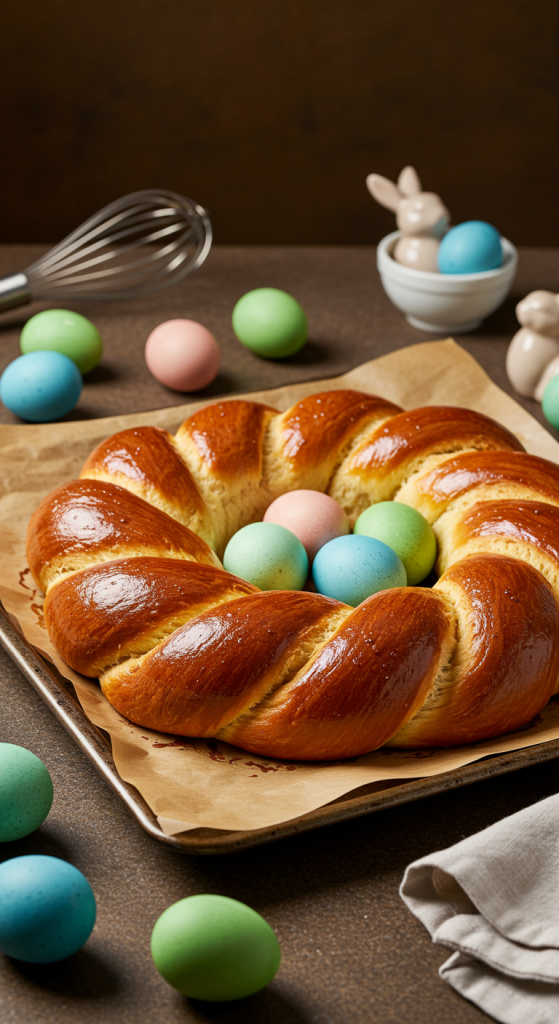
Why You’ll Love This Italian Easter Bread
Grandma Nardi’s Italian Easter Bread is the perfect blend of flavor, tradition, and visual beauty. The tender, enriched dough is slightly sweet with a hint of citrus, offering a delicate, soft crumb that pairs beautifully with coffee or tea. The braided presentation with dyed eggs makes it stunning on any table, and it’s an absolute joy to prepare with family.
Whether you’re continuing a beloved tradition or starting a new one, this bread brings warmth and celebration into your home. Plus, it’s versatile: enjoy it for breakfast, as a festive brunch item, or just as a mid-afternoon treat. It’s a labor of love that tastes just as wonderful as it looks.
How to Make Grandma Nardi’s Italian Easter Bread
Step 1: Prepare the Dough
In a large mixing bowl, combine warm milk and sugar. Sprinkle in the active dry yeast and let it sit for about 5 to 10 minutes until frothy. Add in the eggs, melted butter, orange zest, vanilla extract, and salt. Slowly mix in the flour, one cup at a time, until a sticky dough forms. Transfer the dough to a floured surface and knead for 8 to 10 minutes until smooth and elastic.
Step 2: First Rise
Place the kneaded dough in a greased bowl, cover with a clean towel or plastic wrap, and set it in a warm place. Let it rise for about 1 to 1.5 hours, or until it doubles in size.
Step 3: Shape the Bread
Punch down the dough and divide it into three equal parts. Roll each portion into long ropes, then braid them together loosely. Form the braid into a circle and pinch the ends together to seal. Place dyed, uncooked eggs gently between the braids. Set the shaped bread onto a parchment-lined baking sheet.
Step 4: Second Rise
Cover the braided loaf and let it rise again for 30 to 45 minutes until puffy.
Step 5: Bake
Preheat your oven to 350°F (175°C). Brush the top of the loaf with beaten egg for a shiny finish. Bake for 25 to 30 minutes until golden brown and cooked through. Let it cool on a wire rack.
Recipe Variations and Possible Substitutions
You can customize this Easter bread to match your taste or what you have on hand. Instead of orange zest, try lemon zest for a different citrus twist. You can also add a splash of almond extract for extra flavor depth.
For the dyed eggs, use raw eggs if you plan to bake them with the bread, as they will cook in the oven. Hard-boiled eggs can also be used if you prefer not to bake them. If you’re avoiding dairy, swap the milk and butter for plant-based alternatives like almond milk and vegan butter.
And while the traditional shape is a braided ring, you can create individual braided buns or even a straight braid loaf if that suits your occasion better.
Serving and Pairing Suggestions
This beautiful bread is typically served on Easter morning, but it can easily become a staple at any springtime gathering. Slice it and serve with a pat of butter, or toast it lightly and drizzle with honey for a simple yet delightful treat. It pairs wonderfully with a hot cup of coffee, cappuccino, or even a delicate floral tea.
For a more festive table, accompany it with a spread of fruits, cheeses, and cured meats. Its gentle sweetness makes it a great balance to savory sides. You can even use leftover slices to make the most heavenly French toast the next day.
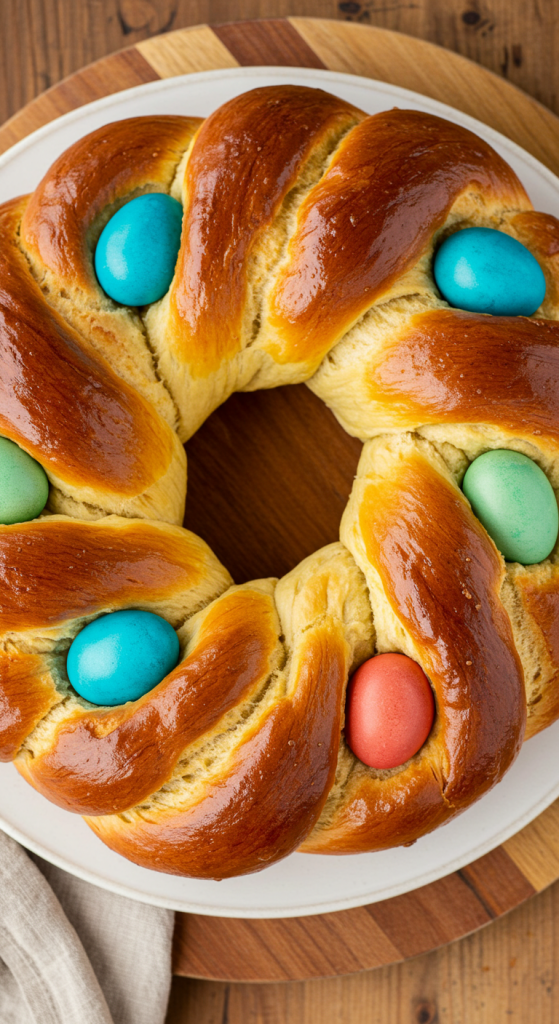
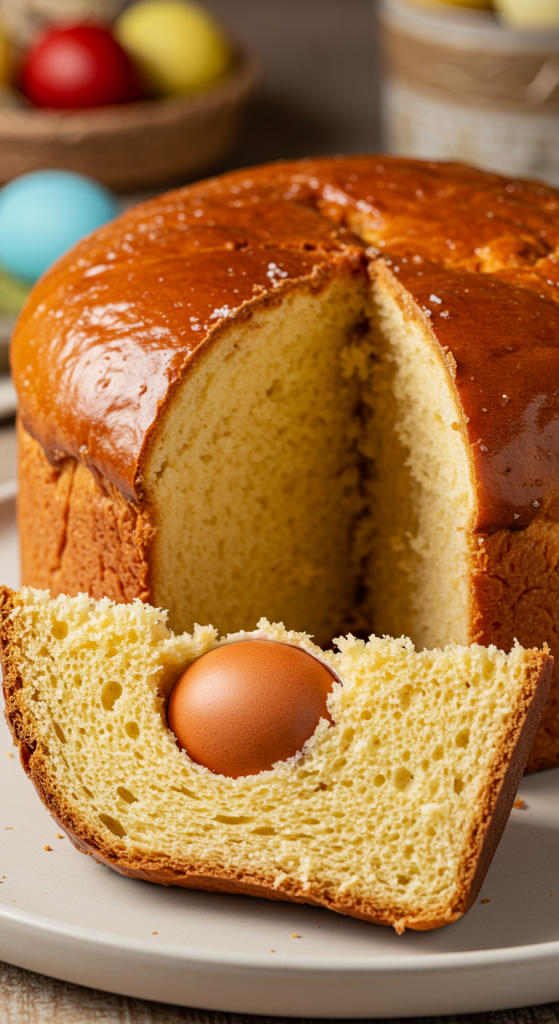
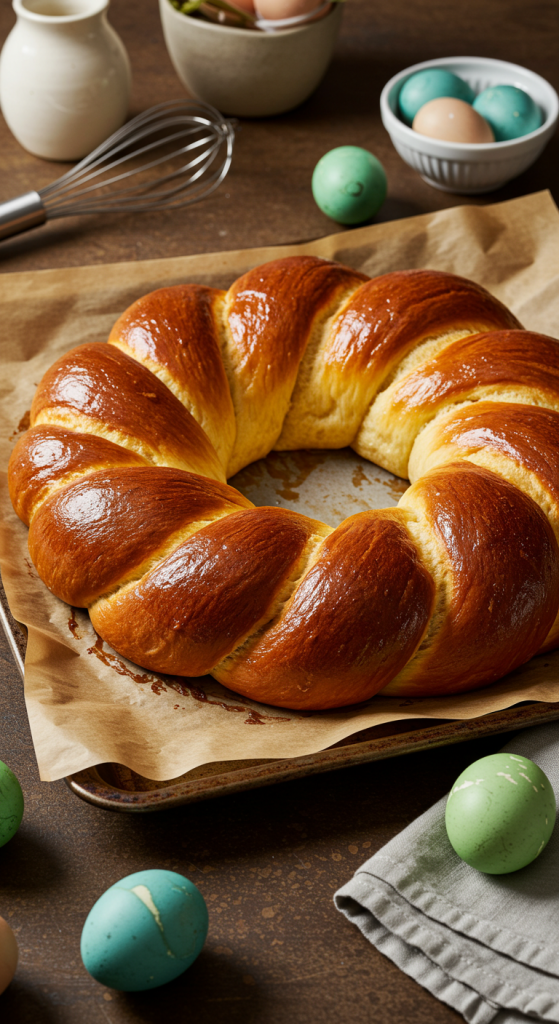
Storage and Reheating Tips
To keep the bread fresh, store it in an airtight container or wrap it tightly in plastic wrap at room temperature for up to 3 days. For longer storage, you can freeze the bread (without the eggs) for up to 2 months. Be sure to wrap it well in plastic and foil before freezing.
When you’re ready to enjoy it again, thaw it at room temperature. To reheat, warm individual slices in the microwave for 10-15 seconds or toast lightly in a toaster or oven. If you froze a whole loaf, wrap it in foil and heat in a 300°F oven for 10-15 minutes.
Frequently Asked Questions
How do I keep the colored eggs from cracking while baking?
Make sure the eggs are at room temperature and gently press them into the dough. Avoid placing them too close to the outer edge where they might get too much direct heat.
Can I make this dough the night before?
Yes! You can prepare the dough and let it rise overnight in the refrigerator. Bring it to room temperature before shaping and continuing with the second rise.
What if I don’t have a stand mixer?
No problem! This dough can be mixed and kneaded entirely by hand. It just takes a little elbow grease and patience.
Are the eggs edible after baking?
If you’ve used raw, dyed eggs and they were handled safely, they are fully cooked after baking and safe to eat. However, they should be consumed within the same day.
Can I use this recipe for other holidays?
Absolutely! Just skip the dyed eggs and decorate the loaf with a dusting of powdered sugar or slivered almonds for a year-round sweet bread.
Related Recipe You’ll Like
If you fell in love with the tradition and flavor of Grandma Nardi’s Italian Easter Bread, you’ll definitely want to try a few more of my seasonal and celebratory favorites. The Flaky Strawberry Cream Cheese Heart Puffs are an absolute joy for springtime celebrations, bringing together puff pastry and sweet berry flavor in each bite.
For something savory to contrast with the sweetness, the One Pan Chicken with Buttered Noodles is a perfect main dish that’s simple yet deeply satisfying. And if you’re in the mood to keep baking, the Cherry Chocolate Cheesecake is a showstopping dessert that combines luscious textures and bold flavors.
These recipes, like the Easter bread, are made to bring people together around a table filled with warmth and good food.
Save and Share This Recipe for Later
If you loved this recipe or want to try it soon, don’t forget to pin it to your favorite Pinterest board. That way, it’s easy to find when you’re planning your Easter menu or want to bake something special for a family brunch. You can also share the recipe with friends on Facebook or send it to a loved one who appreciates a touch of tradition in the kitchen.
Every save and share helps keep these cherished recipes alive and baking in kitchens far and wide. Thank you for being part of that!
Grandma Nardi's Italian Easter Bread
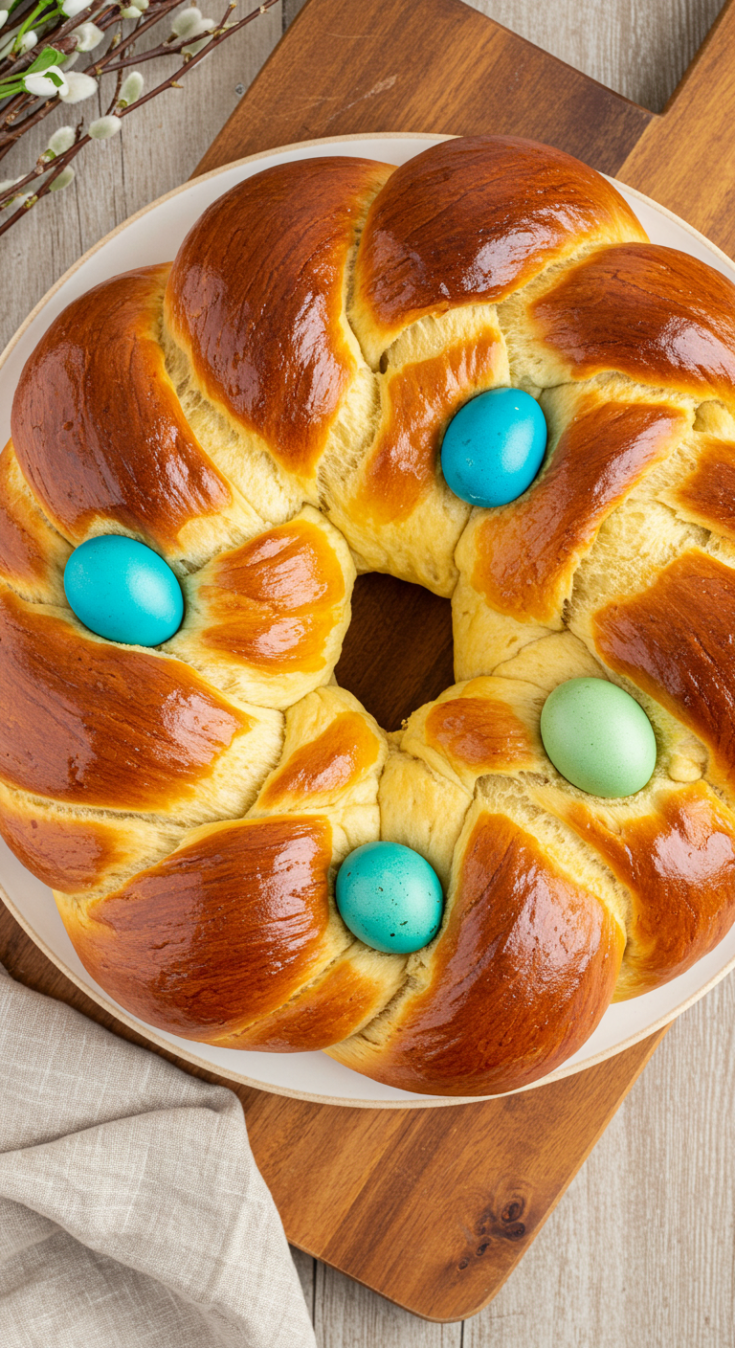
Grandma Nardi's Italian Easter Bread is a traditional, sweet, braided bread baked to golden perfection with colorful dyed eggs nestled between its folds. This festive bread has a soft and slightly sweet crumb, delicately scented with orange zest and vanilla. It is often served during Easter celebrations but is a welcome treat any time of year. Rich in both flavor and heritage, this recipe is a heartwarming centerpiece for any brunch table, perfect for sharing with loved ones. Its vibrant presentation and nostalgic taste make it a beloved family favorite.
Ingredients
- 1 cup warm milk (about 110°F)
- 1/2 cup sugar
- 2 1/4 tsp active dry yeast (1 packet)
- 3 large eggs
- 1/4 cup melted butter
- 1 tsp vanilla extract
- 1 tbsp orange zest
- 1/2 tsp salt
- 4 to 4 1/2 cups all-purpose flour
- 6 dyed, uncooked eggs (room temperature)
- 1 egg (beaten, for egg wash)
Instructions
- In a large bowl, combine the warm milk and sugar. Sprinkle yeast over the top and let sit for 5 to 10 minutes until foamy.
- Beat in eggs, melted butter, orange zest, vanilla, and salt. Gradually mix in flour one cup at a time to form a sticky dough.
- Turn dough onto a floured surface and knead for 8 to 10 minutes until smooth and elastic.
- Place dough in a greased bowl, cover, and let rise in a warm place for 1 to 1.5 hours, until doubled.
- Punch down the dough and divide into three equal portions. Roll into ropes and braid.
- Shape the braid into a ring and place on a lined baking sheet. Gently tuck dyed eggs between the braids.
- Cover and let rise again for 30 to 45 minutes until puffy.
- Preheat oven to 350°F. Brush top with egg wash.
- Bake for 25 to 30 minutes until golden brown. Cool on a wire rack.
Notes
- Eggs used in the bread can be raw if they will bake fully; otherwise, use hard-boiled.
- Lemon zest or almond extract can be substituted for flavor variety.
- For storing, keep in an airtight container at room temperature for up to 3 days or freeze (without eggs) for longer storage.
